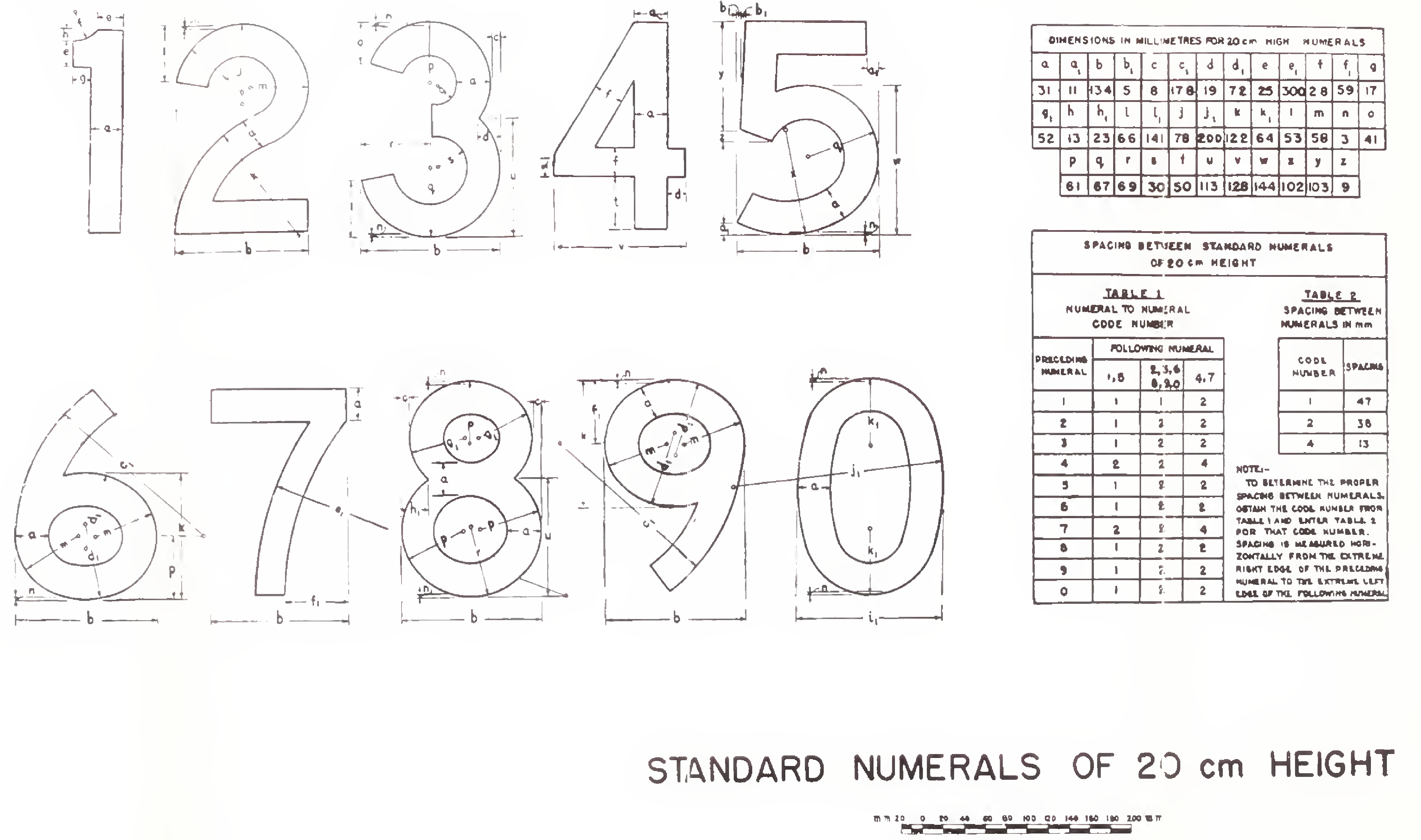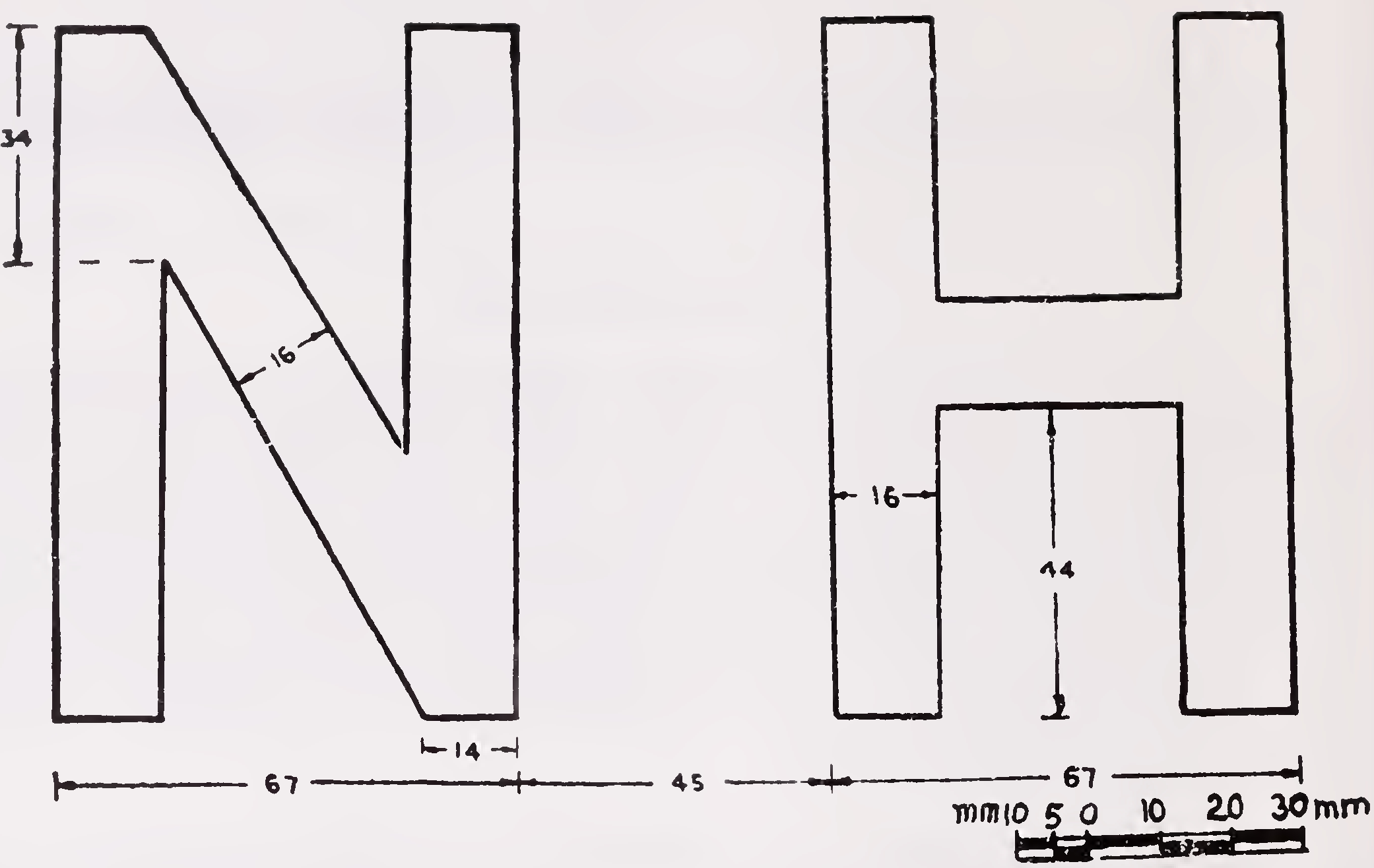
This library of books, audio, video, and other materials from and about India is curated and maintained by Public Resource. The purpose of this library is to assist the students and the lifelong learners of India in their pursuit of an education so that they may better their status and their opportunities and to secure for themselves and for others justice, social, economic and political.
This item has been posted for non-commercial purposes and facilitates fair dealing usage of academic and research materials for private use including research, for criticism and review of the work or of other works and reproduction by teachers and students in the course of instruction. Many of these materials are either unavailable or inaccessible in libraries in India, especially in some of the poorer states and this collection seeks to fill a major gap that exists in access to knowledge.
For other collections we curate and more information, please visit the Bharat Ek Khoj page. Jai Gyan!
IRC : 2-1968
(First Revision)
Published by
THE INDIAN ROADS CONGRESS
Jamnagar House, Shahjahan Road,
New Delhi-110 O11
1985
Price Rs 80/-
(Plus packing & postage)
ROUTE MARKER SIGNS FOR NATIONAL HIGHWAYS
Planting of route marker signs along National Highways is considered advantageous for more than one reason. Type designs for National Highway route marker were developed initially in the Roads Wing of the Ministry of Transport, Government of India and discussed at the Chief Engineers' meeting held in April 1952. The design finalised in light of these discussions was issued by the Consulting Engineer (Road Development) to the Government of India for general adoption and also published as an Indian Roads Congress Standard in 1953.
Consequent upon switchover to metric system in the country, it became imperative to metricise the Standard. The metricisation was initially considered by a Subcommittee of the Indian Roads Congress dealing with matters concerning roads. Later on, it was examined by the Specifications and Standards Committee (personnel given on inside front cover) along with a general revision of the Standard at its meetings held in 1967. Besides rationalisation of the various dimensions and values into metric units, certain other important changes have also been incorporated in this revised edition which was approved by the Executive Committee at their meeting held on 24th September, 1968 and finally by the Council at their meeting held at Bombay on 2nd November, 1968.
A National Highway route marker sign shall consist of a shield painted on a rectangular plate 450 mm by 600 mm. The design is given in Plate 1.
The sign shall have a yellow background and the lettering and border shall be in black. The yellow colour shall conform to “Canary Yellow, Indian Standard Colour No. 309”. Materials of the paint shall be in accordance with the requirements specified by the Indian Standards Institution.
The size, shape and spacing of the letters and numerals shall conform to those given in Fig. 1 and Plates 1 and 5.1

Fig-1: STANDARD LETTERS N AND H OF 100 mm HEIGHT
(All dimensions are in millimetres)
The sign shall be erected on National Highways ahead of their intersections with other important roads, immediately after the intersections as confirmatory route markers, at suitable locations through built-up areas, and at such other points that may be considered necessary to guide the throuh traffic.
The sign shall be erected as indicated in the drawing titled “Arrangement for Erection of National Highway Route Marker Signs”, Plate 2.
On roads without kerbs, the sign shall be erected with a clear distance of 2 to 3 metres between the post and the edge of the carriageway. On roads with kerbs, the sign post shall not be less than 60 mm away from the edge of the kerb. To avoid specular reflection from the sign face, the sign shall be turned slightly away from the road as indicated in Plate 2.
The distance (along the National Highway) of the sign from the junction, on either side of it, shall be 100 to 150 metres. Also, it shall be fixed on the left hand side as one approaches the junction.2
When the sign is erected in advance of a junction, the direction which the National Highway takes at the junction shall be indicated on a definition plate of the size 300 mm by 250 mm fixed below the shield as shown in Plate 2.
Background colour of the definition plate shall be the same as of the shield (Clause 2.2.). The border and arrow shall be in black.
Some type designs of arrows for use on the definition plate in different situations are given in Plate 3.
When a numbered route intersects or takes off from a National Highway, indication about the number of the intersecting route may be provided by erecting, ahead of the intersection, its route marker sign along with the marker of the National Highway route being travelled upon. Such auxiliary markers shall be mounted on the same post as carrying the regular route marker and be accompanied by a definition plate carrying a single or a double-headed arrow pointing in the general direction or directions in which that route may be followed.
The manner of putting up such assemblies is illustrated through two examples given in Plate 4.
Similar to other traffic signs, the reverse side of all route marker signs should be painted in unobtrusive grey, Indian Standard Colour No. 630. The sign post should be painted in 25 cm bands, alternately black and white, with the lowest band next to the ground being black.
The sign may be of either enamelled or painted steel plate.3
PLATE 1

PLATE 2
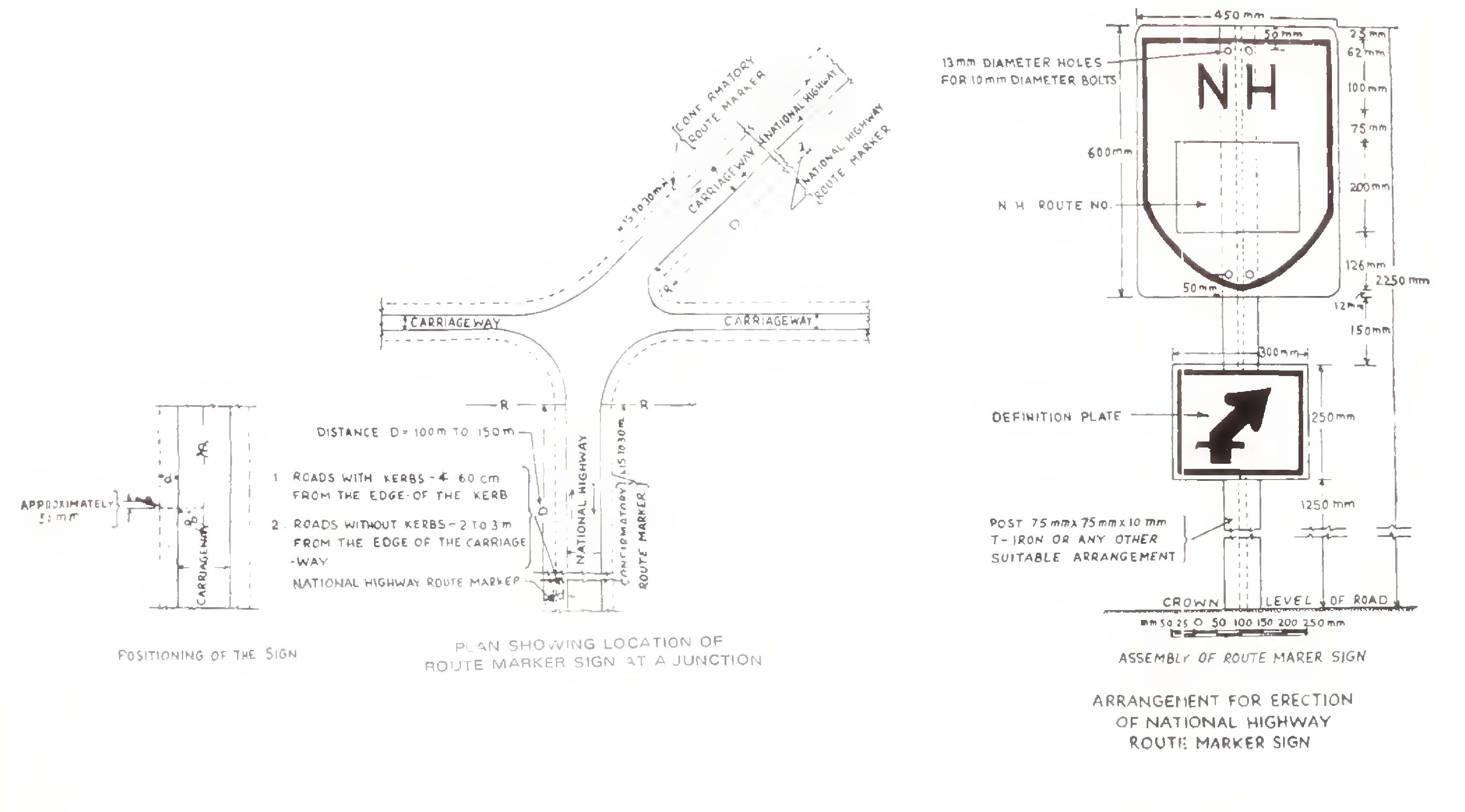
PLATE 3
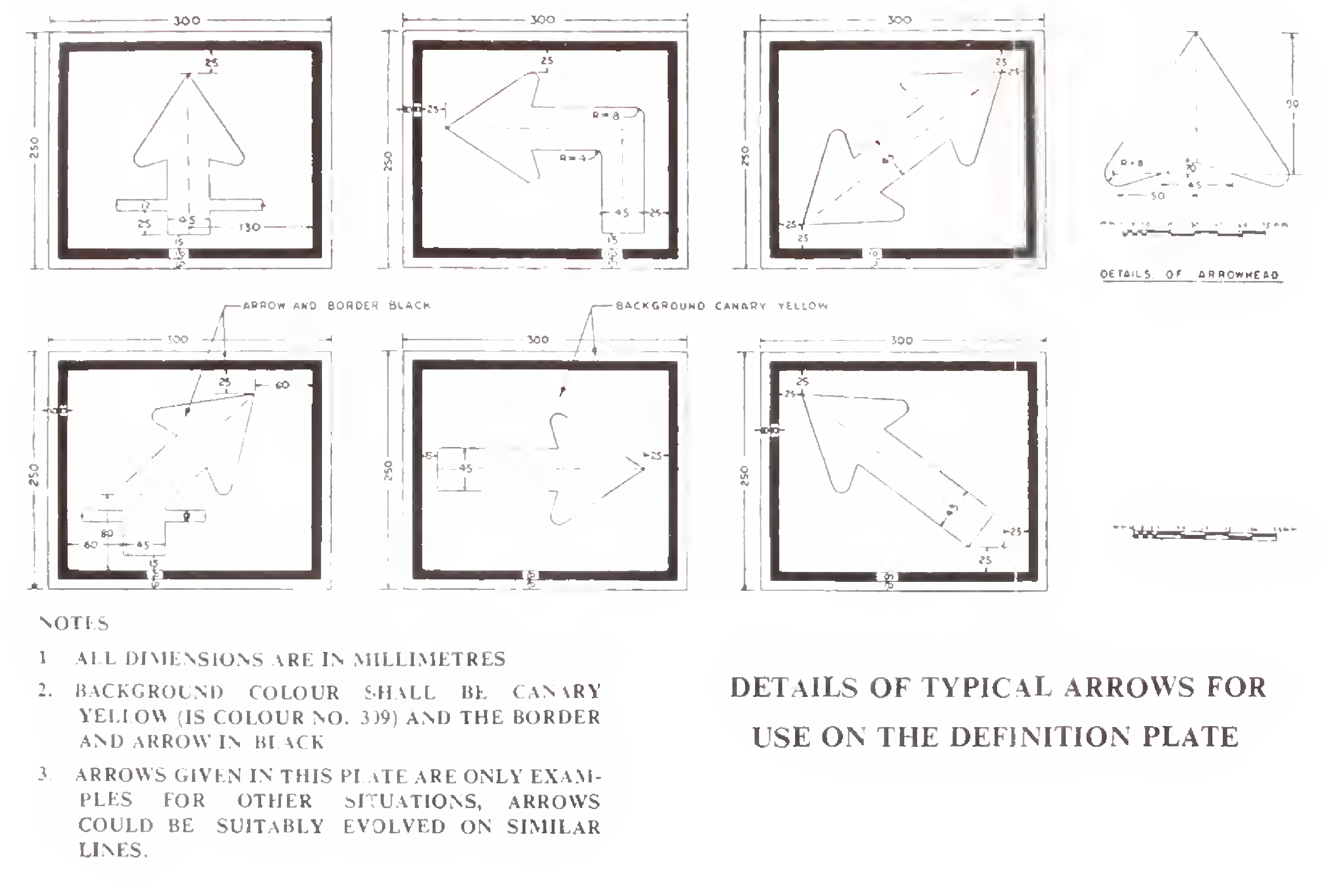
PLATE 4
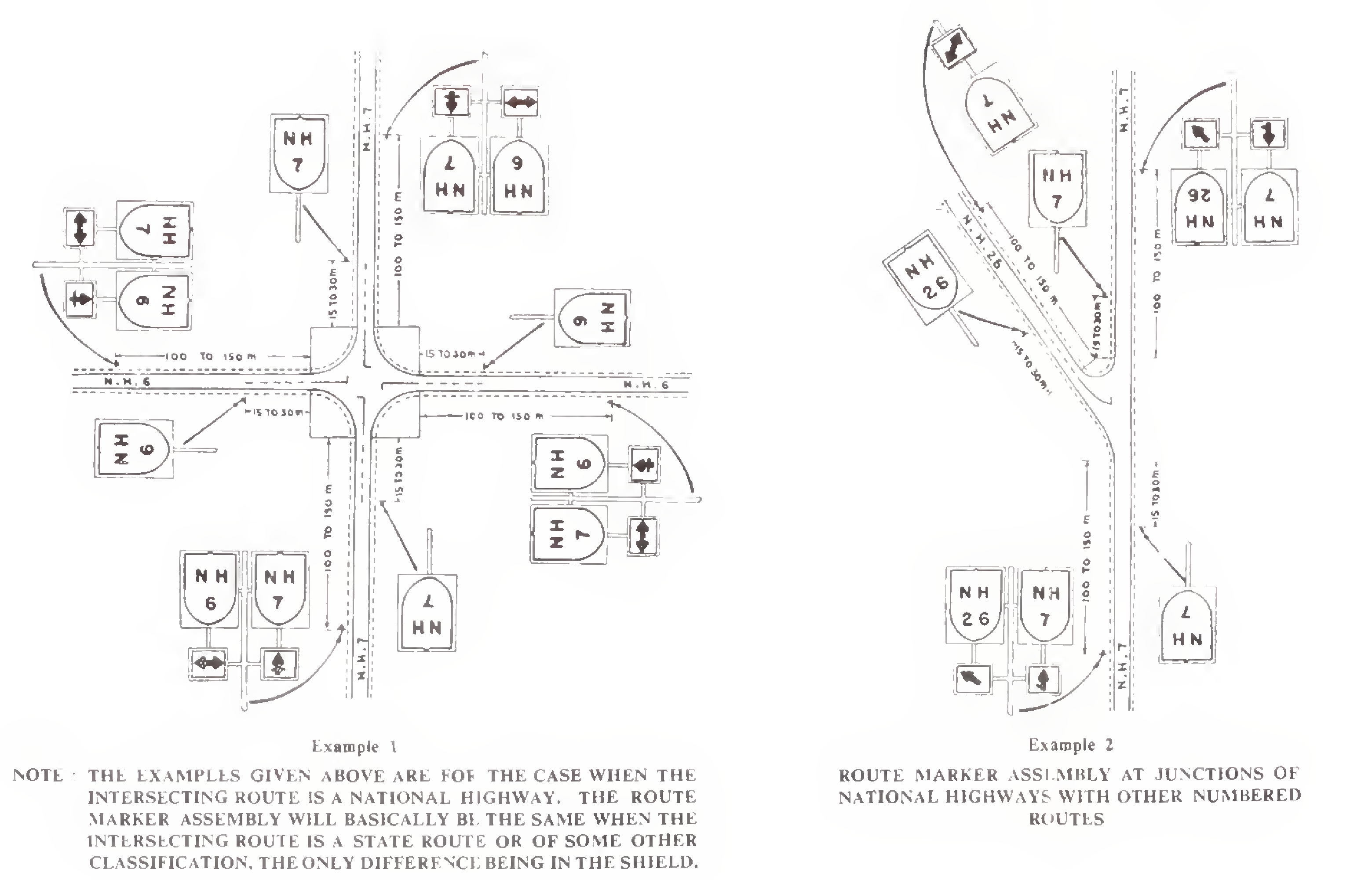
PLATE 5
